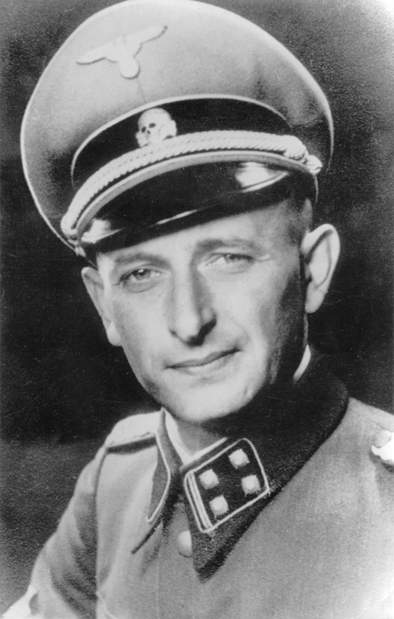The Kastner Report Affidavit of Dr. Rudolf Kastner, former President of the Hungarian Zionist Organization, 9/13/1945 This report has been transcribed from the original report and sworn statement made by Dr. Rudolf Kastner in London to the United States Major Judge Advocate General Warren Farr. [The photo's have been added to enhance the text] |
Dr. Reszco (Rudolf) Kastner, being duly sworn deposes and says:
I was born in 1906 at Kolozsvar (now Cluj, Romania), solicitor and journalist, residing at Chemin Krieg, 16, Pension Sergey, Geneva, now temporarily at 109, Clarence Gate Gardens, London.
I was in Budapest until November 28, 1944; as one of the leaders of the Hungarians Zionist organization. I not only witnessed closely the Jewish persecution, dealt with officials of the Hungarian puppet government and the Gestapo but also gained insight into the operations of the Gestapo, their organization and witnessed the various phases of Jewish persecution.
The following biographical data of mine might be of interest:
Between 1929-1931 - Political editor of “Uj Lelet? Jewish daily newspaper published in Koliszvar; Secretary-General of the Parliamentarty Group of the Jewish party in Romania.
Between 1929-1931 -Worked in Bucharest; member of the Executive of the Palestine Office of the Jewish Agency.
In Dec. 1940 -Being a Jew I was excluded from the Chamber of Lawyers. “Uj Kelet” the daily, was closed down by the Hungarian authorities: I moved to Budapest.
Between 1943-1945 -Associate President of the Hungarian Zionist Organization.
July 1942 -I have been called up for Labor Service: together with 440 other Jewish Intellectuals and citizens we worked in South-Eastern Transylvania on fortifications along the Hungarian-Rumanian border. In Dec. 1942 -I was demobilized, and later returned to Budapest. Some time before being drafted I have begun to organize relief work for refugee Slovakian Jews. After my demobilization I succeeded in establishing – through diplomatic couriers – contact with the Relief Committee of the Jewish Agency, working in Istanbul. On their instructions I have taken over the leadership of the Relief Committee in Budapest. Our task was: To help smuggle Jews from Slovakia and Poland into Hungary to save them from the threat of the gas-chamber. To feed and clothe them and to assist in their emigration to Palestine. To forward the minutes based on the declaration of the refugees on the question of deportation and annihilation of Jews to Istanbul, later to Switzerland, to the hands of the representatives of the Jewish Agency and the Joint distribution committee. To co-operate with the Relief Committee of Bratislava in matters concerning saving, hiding, of refugee Jews and exchange of information. After German occupation of Hungary, on the 19th March 1944, the Relief Committee concentrated its efforts on the saving of Hungarian Jewry. The Relief Committee of the Jewish agency which I was a president was engaged in helping Allied prisoners-of-war. More-ever we sent confidential reports to the Allies thru Istanbul and Switzerland about our connections with officials of the German government. We helped to hide and supported leaders of the Hungarian underground and gave a wealth of information to those Hungarian authorities which were working against the Germans. During the siege of Budapest, when I was already out of the country, other members of the Relief Committee participated in street fighting against the Germans.
On 15 May 1944 One of my collaborators, Eugen Brand was sent by the Germans to Istanbul to pass on certain business proposals in connection with the saving of Hungarian Jews.
On 21 August 1944 I travelled from Budapest under German escort to the Swiss frontier and acted as intermediary for the first conversation between Kurt Becher and Saly Mayer, Swiss representative of the Joint D.C to discuss the price of abandoning the gassing. The conversation took place between St. Margaraten and Hochst on the bridge. From there I returned to Budapest.
On 14 October 1944 I travelled for the second time to St Margathen.
On 30 October 1944 I travelled to St. Gallen, accompanied by Kurt Becher and Dr. Wilhem Billitz, director of the Manfred Weiss Works. On this occasion an interview took place between Becher and McClelland, Swiss representative of the War Refugee Board in the Savoy Hotel, at Zurich. I returned to Budapest.
On 28 November 1944 I left on German instructions to the Swiss Border.
On 20 December 1944 I entered Switzerland.
On 27 December 1944 I started out to travel back to Budapest but could only get to Vienna. The Red Army had encircled Budapest.
On 29 Dec. 44 thru 28 March 1945 I remained in Vienna. Afterwards toured Bratislava-Spitz an der Donau – Berlin – Bergen Belsen – Hamburg – Berlin – Theresienstadt.
On 19 April 1945 I crossed the Swiss border.
The Germans entered into discussion with leaders of the Jewish community for reasons of administrative efficiency. We conducted the discussion in the hope that we might be able to save some human lives. By holding the axe over our heads they made them responsible for financial contributions and other extractions imposed on the Jewish community.
Ultimately the leaders of the “Jewish Council” and other intermediaries were also scheduled for extermination. The SS and the Gestapo were particularly bent on liquidating those who had direct knowledge of their operations.
I escaped the fate of other Jewish leaders because the complete liquidation of the Hungarian Jews was a failure and also because SS Standartenfuhrer Becher took me under his wings in order to establish an eventual alibi for himself.
He was anxious to demonstrate after the fall of 1944 that he disapproved the deportations and exterminations and endeavored consistently to furnish me with evidence that he tried to save the Jews.
SS Hauptsturmfuhrer Wiscliczeny repeatedly assured me that according to him German cannot win the war. He believed that by keeping me alive and making some concessions in the campaigns against the Jews he have a defense witness when he and his organization will have to account for their atrocities. Strangely he came to the Hungarian Jews with the letter of recommendation from leading Slovak Jews. The latter were not deported in 1942 and were saved over until the end of 1944.
Major phases in the persecution of Hungarian Jewry
Before the German occupation: 17,000 Jews (mainly from Ruthenia), were deported to Poland in August 1941. There they were transferred to the German military authorities. These were executed during the succeeding three months. In Kamenets-Podolsk alone 4,500 Hungarian Jews were shot dead. RESPONSIBLE- Prime Minister Bordessey. Between 23 and 25 of January 1942 Hungarian military units “cleaned up” the southern region captured from the Yugoslavs. In Novisad they shot dead 1,500 Jews found at home or in the streets, or taken to the Serbian cemetery or to the beach. A further 2,000 Jews were only saved by an order from Admiral Horthy. Commanders of the military force were General Feketehalmi-Zeisler, General Bajor-Bayer and Captain Zoldi. The so-called Jewish Labor companies, created within the framework of military pioneer services, were in fact concentration camps organized on the German model. Of the 130,000 Hungarian Jews recruited by this means, about 50,000 died from starvation, typhus, and shooting, 30,000 were taken prisoner by the Russians, 20,000 were deported to Germany; about 30,000 remained in Hungary. Organizers of the “Labor Service” were Bartha, Minister for War Werth, Chief of Military staff.
After the German Occupation:
19 March 1944, together with the German military occupation arrived in Budapest a “Special Selection Commando” of German Secret Police with the sole object of liquidating the Hungarian Jews. It was headed by Adolf Eichmann, SS Obersturmbannfuhrer, and Chief of Section IV.B. of the RSHA.
His immediate collaborators were- SS Obersturmbannfuhrer Hermann Krumey, Hauptsturnfuhrer Wisliczeny, Hunsche, Novak, Dr. Seidl, later Danegger, Wrtok. They arrested and later deported all to Mauthausen, all the leaders of Jewish political and business life and journalists, together with the Hungarian democratic and anti-Fascist politicians; taking advantage of the “interregnum” following upon the German occupation lasting four days they have placed their Quislings into the Ministry of the Interior. These were Ladislas Endry and Ladislas Baky.
Utilizing the Hungarian administrative organs they have: Arrested all Jews arriving in or leaving Budapest (about 2.500 people, all were detained at Kistarcsa). Excluded the Jews from using postal and telephone facilities. Took over for SS and German military purposes all Jewish public buildings, schools and hospitals.
On 23 March 1944 the Quisling Cabinet was formed, b the purpose of which was (according to the statement made by Wisliczeny), the sole aim of implementing the Final Solution to the Jewish problem.
During the deliberations preceding the formation of the Cabinet, Prime Minister Sztojay undertook in the presence of SS Obergruppenfuhrer Winckelmann, Hungary’s SS Commander, SS Standartenfuhrer Wesenmayer, new German Minister, and Eichmann, that the Hungarian Government will do everything possible to help in the liquidation of the Hungarian Jewry.
One anti-Jewish decree followed another after the Sztojay Cabinet took over. At the same time Krumey and Wisliczeny appeared in the building of the Jewish Committed and informed Samuel Stern, President, that the matters concerning the Hungarian Jewish problem would henceforth “ be dealt with” within the competency of the SS.
They warned the Jews against creating panic and obliged the Jewish leader to form a “Jewish Council.” Then a huge levy was imposed (money and goods worth about 11,000,000 pengos had to be handed over). When President Stern made an enquiry at the Hungarian Ministry of the Interior he was told - “You must fulfill the German demands….”
On the 26 March 1944 the whole of Ruthenia, Upper Hungary, and Northern Transylvania were declared operational territory at the request of the German General Staff. During the next days that followed Eichmann, Wisliczeny, and Hunsche had daily conferences with Ladislas Endre who received full authority from the Cabinet in matters concerning Jews.
On 9 April 1944 the military authorities, with headquarters at Munkacs, began the rounding up of 320,000 Jews into Ghettoes within the operational area. In order to prevent any armed resistance by the Jews, they were concentrated in brick factories (as at Kassa, Ungvar, Kolozsvar) or under the open skies ( as at Nagybanyam, Marosvasarchely, and Des).
In a few cases they were allowed to retire into some sections of the cities (as in Nagyvarad, and Maramarossziget). Food allocations per day were: 1/5th of a lb of bread and two cups of soup. From the Jews sent into the ghettos, even matches were confiscated.
While an agreement was arrived at between Wesenmayer, German Minister and a representative of Sauckel on the other hand, and Prime Minister Sztojay, on the other, that Hungary would place 300,000 Jewish workers at the disposal of the Reich (who were to be selected by a mixed Hungarian-German committee), total deportation was decided by Endre, Baky, and Eichmann at a meeting in the Ministry of the Interior on 14 April 1944.
Novak and Lullay left on the next day for Vienna to discuss the question of transport facilities with the management of the German railways. A further levy of 2,000,000 pengos each was imposed by the Gestapo on the Jews of Novisad and Ungvar. Jewish shops were looted by Germans. Despite a German protest, the Hungarian government ordered the closing down of all Jewish shops.
The Jews resisted in the ghetto of Munkacs. The Gestapo shot 27 of them, including the entire executive of the Jewish Community.
On 28 April 1944 the first deportation takes place; 1,500 people suitable for labor were taken from the Kistarcsa internment camp to Osweicim. There, they were compelled to write encouraging notes to their relatives with datelines from “Waldsee”. The notes were brought by an SS-Courier to Budapest and were distributed by the Jewish Council.
In the meantime the Budapest Relief Committee received two messages from the Bratislava Committee. One message said that there was feverish work going on in Osweicim to restore the gas-chambers and crematoriums there, which were not working for months and remark made by an SS-NCO that soon we will get fine “Hungarian Sausages” was reported.
The other message was to the effect that an agreement was reached, between the Hungarian, Slovakian and German railway management that, for the time being, 120 trains would be directed, via Presov, towards Osweicim. This information was passed on to the Bratislava Relief Committee by an anti-Nazi Slovakian railway official. It was obvious that it concerned deportation trains.
The Delegate of the International Red Cross, to whom I have appealed for intervention, stated that in view of the Geneva Convention this was impossible for him. The Swedish and Swiss Legations promised that they would report to their Governments and ask for instructions.
Despite repeated appeals to the Primate of the Catholic Church promised an intervention on behalf of the converted Jews, however Sztojay refused to listen. After consulting with all Jewish leaders we turned to the Germans. At first Krumey, Wisliczeny and Huncshe negotiated with us; later Eichmann took over the negotiations. Eichmann arrived at Budapest on the first day of the German Occupation, March 19 1044. Wisliczeny arrived there at March 23. The first time we negotiated was on April 2.
At first the Germans demanded a compensation of 2,000,000 dollars and promised that in return for this sum they would not deport anyone. Later Eichmann declared:
“I can only sell the Hungarian Jews as from Germany. Brand should leave at once for Istanbul and inform the Jews there and the Allies that I am prepared to sell 1,000,000 Hungarian Jews for goods, primarily vehicles. I would transfer them to Osweicim and put them on ice. If my generous offer is accepted I will release all of them. If not, they will all be gassed.”
In the meantime the organization of the ghettos has been directed by Wisliczeny, who had been travelling from town to town. The Hungarian police and gendarme were at his disposal everywhere. Officially he only acted as an “advisor” to the Hungarian authorities; in reality everything took place on German orders.
15 May 1944 General and total deportation begins. One day before the evacuation all hospital cases, newly-born babies, blind and deaf, all mental cases and prison inmates of Jewish origin were transferred to the ghettos. About 80 – 100 Jews were placed in each cattle car with one bucket of water; the car was then soaked down.
At Kassa the deportation trains were taken over from the escorting Hungarian gendarme by the SS. While searching for “hidden valuables” the gendarme squads tortured the inmates with electric current and beat them mercilessly. Hundreds committed suicide. Those who protested or resisted were shot at once (as in the case of Dr. Rosenfeld, solicitor of Marosvasarhely).
The Hungarian press and radio kept quiet about the deportations. The Hungarian government denied in the foreign press that Jews were tortured.
Between 5 June, and 8 June, 1944 Eichmann told me:
“We accepted the obligation toward the Hungarians that not a single Jew deported will return alive!”
Up to 27 June 1944 475,000 Jews were deported. The Pope and the Kind of Sweden intervened with Horthy. Then followed the ultimatum-like appeal of President Roosevelt to stop the brutal anti-Jewish persecutions. Thereafter Horthy has forbidden the deportations’ of the Jews from the capital which was already fixed to take place on July 5.
Endry, Baky and the Germans protested against this decision and a further 30,000 Jews were deported from Transdanubia; the outer suburbs of Budapest were also emptied. Horthy dismissed Endre.
The Red army bombed Budapest and the railway junctions which were to be used by the deportation trains. Horthy has ordered the mobilization of the army against the attempted coup d’etat. But Eichmann emptied the camp of Kistarcsa by secretly collaborating with the camp Commander and another 1,700 Jews were transported off in the direction of Oswiecim.
On Horthy’s orders the train was stopped at the frontier and the people were brought back. But Eichmann repeated his coup after 3 days and prevented any information from reaching Horthy in time.
On 15 July 1944 an ultimatum was handed over by Wesenmayer, German minister to the Hungarian minister of foreign affairs demanding the deportation of the Budapest Jews. The Hungarian Government replied in a note to the effect that it was prepared to transfer the Budapest Jews to satisfy the demands of Military security, but only within the borders of the country.
Allied success has strengthened the position of the Hungarian Government against the Germans. Lakatos the new Hungarian Prime minister sent a note to the German government demanding the recall of Eichmann and his staff from Hungary, the transfer of the German-controlled internment camps to Hungarian authorities and the handing over of Hungarian politicians in German captivity to the Hungarians.
On 25 August 1944 following instructions received from Himmler, Wesenmayer informed the Hungarian Government that its demands would be fulfilled by the Germans.
But on 15 October 1944 a German coup ended the Horthy regime and Szalasy took over power. On 17 October Eichmann returned to Budapest by air. On his orders the Arrow-Cross Party and the police began the deportation of all Jews locked into houses marked by yellow-stars; 25,000 Jewish people, mostly women were made to walk over 100 miles in rain and snow without food to the Austrian border; hundreds died on the way, more died in Austria through exhaustion and dysentery. On the border the transports were taken over by Wisliczeny; 20,000 labor service men shared the same fate.
The German authorities were the same as before; the most active Hungarian collaborators were: Minister Emil Kovarcz, Solymosi, Under-Secretary of State and Ladislas Ferenczi, Lt. Col. Of the Gendarme.
On 8 December the deportations from Budapest stopped.
According to Wisliczeny, Eichmann refused to carry out Himmler’s order to stop deportation until he received written instructions from Himmler himself. Until 11 Feb 1945 the Arrow-Cross party-men did not stop hunting down Jews in hiding, living on false papers; 10-15,000 Jews were shot on the shores of the Danube or in the streets during these two months.
Thousands have died in the ghettos, as well as in the “protected houses” of the Swedish and Swiss legations, as a result of enemy action, sickness or starvation.
The Losses of Hungarian Jewry.
The 1940-41 censuses found 762,000 persons of Jewish persuasion within what was then Hungarian territory. But the persecution was extended to the converted Jews, as well as to the mixed marriages, of which there were no official figures. Their numbers were estimated generally at 60,000.
According to figures estimated in August 1945:
There are at present in Budapest: 150,000 Jews In the provinces: 40,000
In Transylvania (returned to Romania), in Ruthenia (attached to Russia), and in the Backa (returned to Yugoslavia), there are estimated to be: 50,000
Total 240,000 Jews
In territory occupied by the Allies and in Russia, Sweden and Switzerland approximately:
50,000
Total 290,000 Jews
Of the 10,000 or so Slovakian, Polish, Yugoslav, and German Jews who were in Hungary at the time of the German occupation, only about 750 are still alive, according to reliable estimates.
Therefore, a total of 540,000 Hungarian and 10,000 refugee Jews perished, of them, the Germans were responsible for the death of: 450,000 Jews
The Hungarians: 80,000
Suicide, sickness, military actions: 20,000
Total 550,000
These figures concerning the deported Jews originate from Wisliczeny, who directed the deportations and was fully competent to give these figures. It may be added that the objective of the new way of deportations which started at the end of October 1944 was no longer Oswiecim. On this the occasion, older people, children and the sick were not deported. Those who remained alive after the long journey on foot were for the most part – employed on fortification works, along the Austro-Hungarian border; a lesser number were sent to Oranienburg, Dachau, and Bergen-Belsen.
General history of the Annihilation of the Jews – Section IV.B. and the Annihilation of the Jews.
Pogroms and the creation of the ghettos organized in various centers in Poland during 1939-40 represented a period of hesitation. At that time the extinction of all European Jews was planned, but it was not finally decided upon. The Lublin “reservation” and the Nazi’s “toying” with the idea of a Jewish center were expressions of this period of hesitation. The decision to exterminate the Jews was probably reached in 1941.
In the occupied Baltic countries and in the Ukraine the SS-formation working jointly with the Wehrmacht annihilated nearly all Jews (in the Baltic countries they were assisted by the Latvians and Lithuanians).
The mass-murder was carried out with the aid of bullets. The victims often dug their own tombs. Frequently they were buried alive. Then began the use of gas. The victims were killed by gas bursting inside hermetically sealed lorries.
In the fall of 1941 – according to a statement of Wisliczeny that was made to me in January 1945 in Vienna, Kaltenbrunner commissioned SS-Standartenfuhrer ?? (text illegible) to work out the plan of the gas chambers. In the opinion of Wisliczeny the initiative came from Eichmann. Hitler approved of the plan at once and the executions were entrusted to the Eichmann-Himmler-Kaltenbrunner trio.
In December 1941 the first tests were carried out in Belzec. According to a statement of Wisliczeny made to me in Vienna in February 1945 it was a complete success. Thereupon three more death-camps were setup in Treblinka, Majdanek and Osweicim, (followed by a smaller camp in Malkini).
According to statements of Krumey and Wisliczeny in February or March 1945 a conference of the officers of the IV.B. was called to Berlin by Eichmann in the spring of 1942. There he informed them that the government decided in favor of the complete annihilation of European Jewry and it would be accomplished in an discreet and silent fashion by the use of gas chambers.
“Victory is ours!” declared Eichmann. “The end of the war is near. We must hurry as this is the last change to free Europe of the Jews. After the war it will not be possible to utilize such methods.”
Wisliczeny claims that he interjected the following remark to Eichmann's statement: “God help us that this method should never be possible against us.” Krumey confirmed this statement of Wisliczeny, but no one else knew anything about it.
The entire machinery of the German State supported Section IV.B. in this work. In occupied countries the commanders of the Wehrmacht and the Gauleiters (Seyss-Inquart, Frank, Heydrich, etc), in the countries allied to Germany the German diplomats (Killinger in Bucharest, Wesenmayer in Zagreb & Budapest), also supported the work.
The plan of operation was almost identical in all countries: First the Jews were marked, then separated, divested of all property, deported and then gassed.
The officers of the IV.B. travelled from country to country. Wisliczeny, by his own admission, directed the operation in Slovakia and Greece.
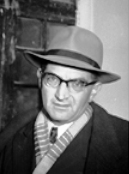
Rudolf Kastner
|
Brunner – Poland and Slovakia, Krumey/Seidl directed the work in Hungary, Austria and Poland. Seidl was the first commander of Theresienstadt. Gunther directed deportations in Austria and Czechoslovakia. Danegger, Brunner in France.
Almost everywhere the local Quisling authorities and even part of the civilian populations assisted them. The commanders of the death-camps gassed only on direct or indirect instructions of Eichmann. The particular officers of the IV.B. who directed the deportations from some particular country had the authority to indicate whether the train should go to a death-camp or not, and what should happen to the passengers.
The instructions were usually carried out by the SS-NCO escorting the train. The letters “A” or “M” on the escorting instruction document indicated Auschwitz (Oswiecim), or Majdanek; it meant that the passengers were to be gassed. In case of any doubt, instructions were requested by wire to Eichmann in Berlin.
Regarding the Hungarian Jews the following general ruling was laid down in Oswiecim:
Children up to the age of 12 or 14, the elderly above 50, as well as the sick, or people with criminal records (who were transported in specially marked wagons) were immediately gassed upon arrival.
The rest passed before an SS-doctor who, on sight, indicated those fit for work and those not. Persons deemed unfit were sent to the gas chambers, while the others were distributed in various labor camps.
In September 1944 Slovakian partisans engineered a revolt in Banska-Bystricza. The Jewish youth joined the revolution enthusiastically. Eichmann thereupon sent SS-Hauptsturmfuhrer Brunner to Bratislava with instructions to deport all the 17,000 odd Jews still left behind after the deportations of 1942. They were sent to Osweicim.
SS and Hlinka guards arrested the Jews. They were transported from Sered, about 13,500 Jews were caught, and the rest were in hiding. Following my appeal to the A.D.C of Becher Capt. Gruson journeyed to Bratislava and tried to intervene with SS-Obersturmbannfuhrer Vitezka, (Slovak Gestapo Chief) to stop the deportations. Vitezka’s reply was:
“As far as I am concerned I will agree readily if get approvals from Kaltenbrunner, wired to me.”
Becher said on 2 November 1944, in the Hotel Walhall, St. Gallen, Switzerland, in the presence of the representative of the Joint D.C:
“We have militarily annihilated the Slovakian Jews.”
In the first half of November 1944 about 20,000 Jews were taken from Theresienstadt to Oswiecim and were gassed, on instructions from Eichmann. As far as I could ascertain this was the last gassing process.
According to Becher, Himmler issued instructions on 25 November 1944:
To destroy all the gas-chambers and crematorium of Oswiecim (with dynamite). He also issued a ban on the further murdering of Jews. Wisliczeny confirmed the existence of such an order. But he maintained that Eichmann sabotaged this order and was supported in this by Muller and Kaltenbrunner.
Following the advance of the Russian army it was necessary to evacuate the Polish and Silesian camps. Some of the Jewish prisoners were sent to Bergen-Belsen or other camps. Most of the Jews found in these camps by the Allies, arrived there at either the end of 1944 or the beginning of 1945. Other Jews in the extermination camps were shot or froze to death on the way.
There were no mass-murders in the months preceding the German surrender but due to mass starvation- due partly to the collapse of the German transport system and the general lack of food, the sick and weakened Jews died by the thousands.
After the fall of 1944 Himmler granted several concessions. Thus he permitted the departure for Switzerland of 1,700 Hungarian Jews deported to Bergen-Belsen and also agreed to suspend the annihilation of the Jews of the Budapest ghetto.
Himmler permitted the handing over to the Allies the Jews of Bergen-Belsen and Theresienstadt without a shot being fired, which in his eyes and the eyes of his colleagues was a very generous concession, and certainly one which he expected some political concession be granted in return.
In hopes of contact with the Western Allies, Himmler even made concessions without any economic returns. To this end Himmler may be ascribed the general prohibition dated 25 November 1944, concerning the further killing of Jews.
On 27 November 1944 Becher showed me a copy of Himmler’s order on this subject. Eichmann at first, did not obey this order.
In accordance with my above described activities I had dealings with the following individuals:
Germans: Special Section Commandor (For the liquidation of Jews):
Adolf Eichmann – SS-Obersturmbannfuhrer, head of section IV.B. in the Reich Security Head office.
Eichmanns staff:
SS-Obersturmbannfuhrer Gunther
Danegger
Hermann Krumey
SS- Hauptsturmfuhrer Dieter Wisliczeny, Dr. Seidl, Novak, Hunsche, and Schmiedsieffen.
Several NCO’s among them: Hauptsturmfuhrer Richter and Oberscharfuhrer Neumann.
Special Staff (economic staff): SS-Standartenfuhrer Kurt Becher, and some officers of his staff.
SS-Standartenfuhrer Wesenmayer, German Minister in Budapest (after 19 March 1945).
Hungarians: Nicholas Mester, Under Secretary of State in the Ministry of Education.
Ladislas Vitez Ferenczy, Lt. Col. of the Gendarme
Leo Lullay, Captain of the Gendarme
Dr. Stephen Olah, Counselor of the Ministry
Ladislas Baky, Under Secretary in the Ministry of the Interior.
Hungarian Resistance Workers:
Henry Lazar, present Hungarian Under Secretary of State to the Ministry of Agriculture.
Nicholas Kertesz, fomer Social-democratic member of Parliament.
Bela Zsolt, Journalist
A. Bereczky, Trustee of the Calvinist Church.
Neutrals:
Prof. Waldemar Langlet, Cultural Counselor of the Swedish Legation.
Count Tolstov, Representative of the Swedish Red Cross.
Paul Wallenberg, Red Cross
Consul Lutz, Head of the Protection of Foreign Interests Section of the Swiss Legation.
Freidrich Bern, delegate of the International Red Cross
The Charge D’affaires of the Swiss Legation
The Charge D’affaires of the Spanish Legation.
Jews:
All members of the Jewish Council, especially Samuel Stern (Court Counselor), Chairman of the Pest Jewish Communicty; Dr Charles Wilhelm: Dr. Ernet Peto, Dr. Boda, (Chief Govt. Counselor), Vice-Chairmen.
Philip Freudiger, President of the Orthodox Jewish Community and members of the Counsel of that Community.
Otto Komoly, Presidnet of the Zionist Organization: Nicholas Krausz, Head of the Palestine Office of the Jewish Agency.
-Signed
Dr. Rezso (Rudolf Kastner)
-Subscribed and sworn to before me on this 13th day of September, 1945 at the office of the United States Chief of Counsel, 19, Mount Street, London. W1 England.
-Signed
Warren Farr
Major Judge Advocate General
U.S Chief of Counsel
Sources: The United States National Archives College Park - Washington D.C Private collections Copyright Carmelo Lisciotto H.E.A.R.T 2009 |
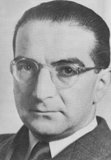

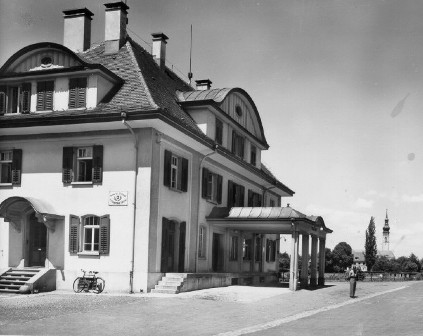
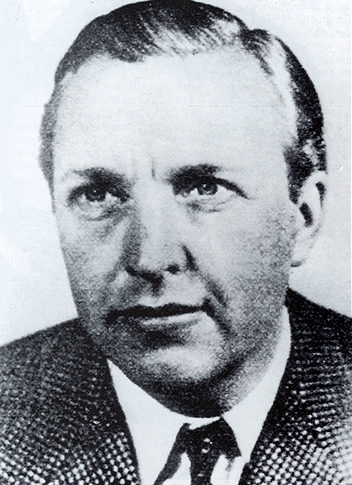
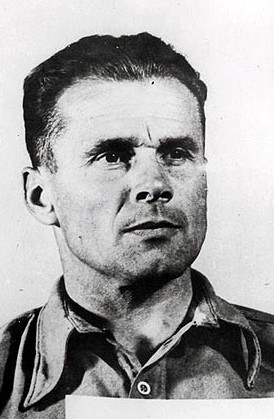
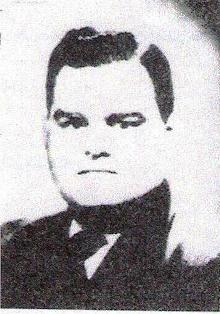
%20standing%20betwen%20Hansi%20and%20Joel%20Brand.%20Moshe%20Schweiger%20is%20first%20from%20left.jpg)
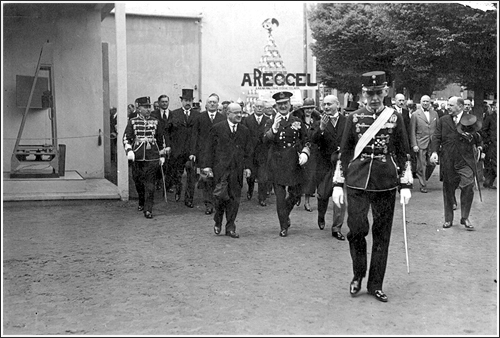
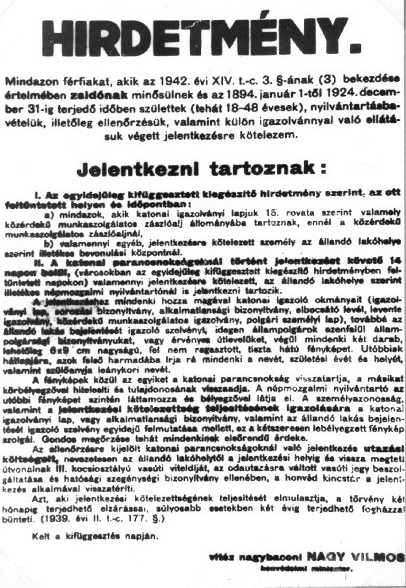

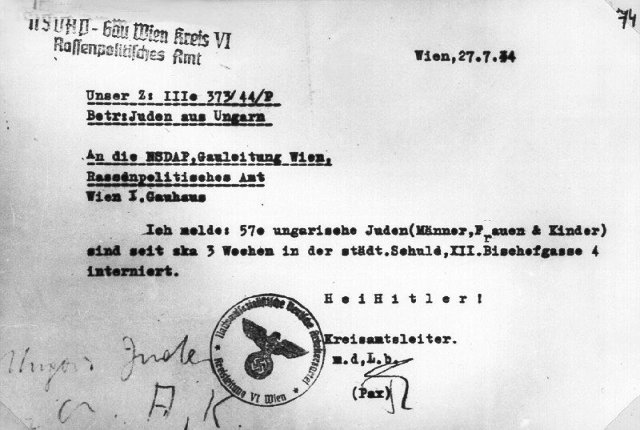
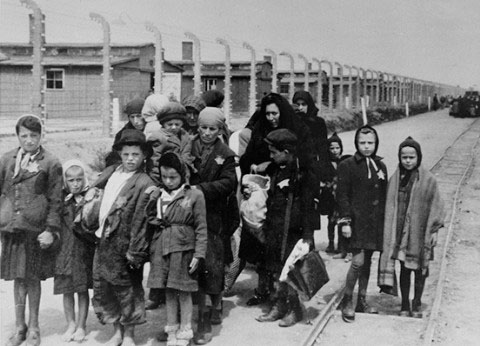
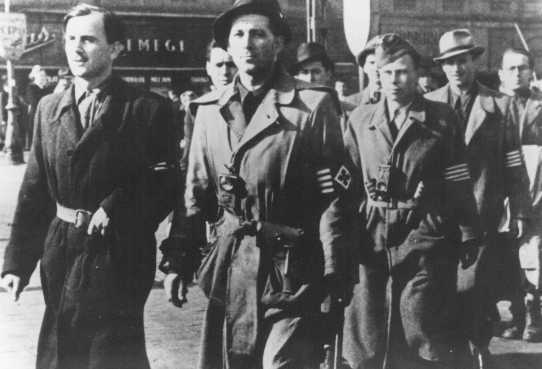

%20and%20Dr.%20Israel%20Rezso%20Kasztner,%20operatives%20of%20the%20Relief%20and%20Rescue%20Committee%20of%20Hungarian%20Jewry..jpg)
